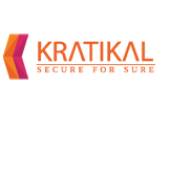What is Email Spoofing?
Do you know, as per the Forbes magazine, scammers send 3.1 billion domain spoofing emails every day? Moreover, to carry out these email scams, cybercriminals impersonate a company, an organization, or a friend to trick users. The motive behind these scams is to divulge users into giving up their sensitive information, login credentials, financial information, or even wire transfers! This fraud strategy of creating a forged sender address to dupe recipients is called email spoofing.
Shockingly, email spoofing does not restrict to impersonating the second person or third person. There are many instances where hackers impersonate the user itself! Check out the image below for an example. It shows that the user itself has been receiving several spam emails from its email address. (image source: Google)

To simply put together, email spoofing is a fraudulent act of creating a forged email header to trick the recipient into thinking that the email has originated from a known or legitimate source. Today, phishing emails and business email compromise (BEC) scams are evolving at a rapid rate due to email spoofing. In fact, email spoofing is infamous for many public and private email-based incidents with serious financial and business loss.
Current Statistics on Email Spoofing Scams
- According to Forbes, scammers send 3.1 billion domain spoofing emails per day.
- From over 300 billion emails sent every day, 3-6 billion email scams are attempted daily.
- Reportedly, business email compromises have risen by 100%. - WRAL TechWire
- Lately, phishing scammers actively impersonated the biggest institutions like WHO, CDC, and various government organizations to capitalize on Covid-19 fears by taking advantage of the big names to exploit users.
- According to the FBI, business email compromises (BECs) have cost more than $26 billion to companies from 2016 through 2019.
- In a cybersecurity survey, while 51% of companies were affected by the ransomware attack, 60% of the companies witnessed an increase in email-based impersonation fraud. - MediaPost
- Email attacks increased by 30% in the first 100 days of the pandemic this year.- MediaPost
How to Stop Email Spoofing Attacks?
The email security report of 2020 states that domain spoofing and email spoofing are the mainstream attack vectors in today’s date. Moreover, it has been reported that there will be an expected increase in email spoofing within the next 12 months. But what empowers these cyber frauds to attempt email-based attacks? The most common and possible reason could be the lack of email authentication.
The Simple Mail Transfer Protocol (SMTP) doesn’t provide any mechanism for authentication of email addresses. Taking advantage of this vulnerability, cyber frauds alter different email sections to impersonate as a legitimate sender identity. They are even capable of altering IP addresses, hence making email spoofing more enhanced.
But to prevent email spoofing attacks, various email authentication protocols and standards have been developed and the following are the most effective ones out of them:
DMARC (Domain-based Message Authentication Reporting and Conformance)
An email authentication protocol that gives the sender the option of letting the recipient know if the email is protected by DKIM or SPF. It is designed and developed to empower domain owners in protecting their domain from unauthorized or malicious use like email spoofing. Primarily, implementing DMARC helps in securing domains from email-based attacks like BEC attacks, email, phishing attacks, etc.

SPF (Sender Policy Framework)
An email authentication standard that detects forged sender addresses while the email is being delivered to the recipient. The SPF allows the receiving email server to check during email delivery whether the email that claims to have come from a particular domain is from a valid IP address enlisted in the domain record or not. The list authorized IP addresses and sending hosts for a specific domain is published in the DNS records for that domain. The SPF record provides an extra layer of stringent protection when implemented in conjunction with DMARC and DKIM. It outlines the authentic IP addresses that are authorized to send emails to a particular domain.

DKIM (Domain Key Identified Mail)
This email authentication standard uses a pair of cryptographic keys to sign outgoing emails to ensure that email is not altered from when it was sent. It allows the recipient to check if the email that claims to have come from a particular domain is actually authorized by the domain’s owner or not. Here the digital signature is added to the headers of the email message. This standard allows the sender to establish better trust by providing security against spoofing of email in which the outbound emails are sent on behalf of the user’s domain.

On implementing these email authentication protocols, an organization can not only enhance the email deliverability rate but also, ensure the security of outbound emails from email spoofing scams. In addition to that, the organization can achieve a full boost in the email engagement rate too!
Apart from these email authentication protocols and standards, organizations should also ensure that their employees are well aware of the prevailing cyber threats. They should be provided with a robust security awareness in which they are educated on how to recognize and combat all types of cyber threats in order to mitigate cyber risks in the organization.
Also, seeing the current situation due to the pandemic, several organizations have adopted the remote working culture which calls for a resilient cybersecurity working environment. Therefore, security leaders in every organization should invest in the best cybersecurity solutions. And since email is a primary as well as an official channel for every business communication, it’s high time for cybersecurity experts to implement layered methods for email security.




Leave Comment